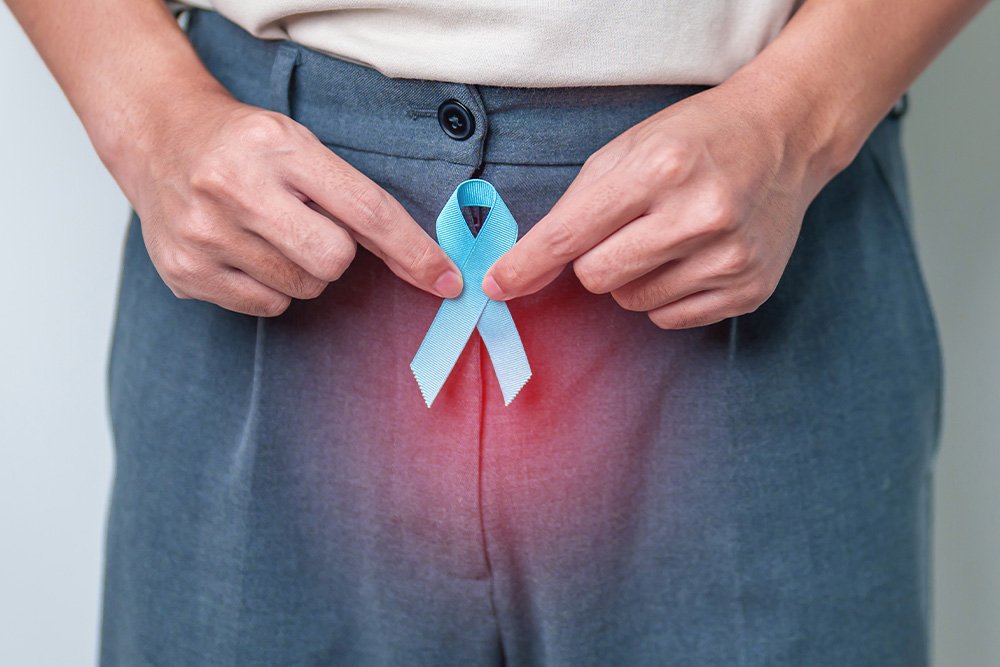Enlarged Prostate
Enlarged Prostate services offered in Central Midtown, New York and East Hills, NY
A man’s prostate gland can cause urinary problems when it gets too large. If you develop enlarged prostate symptoms like poor flow and needing to urinate frequently, visit fellowship-trained David B Samadi, MD, at his Central Midtown Manhattan office in New York City. Dr. Samadi offers innovative, effective treatments like button transurethral resection of the prostate to reduce prostate enlargement and resolve your symptoms. Call the office today or schedule a consultation online for a thorough enlarged prostate evaluation.

What is an enlarged prostate?
An enlarged prostate (benign prostatic hyperplasia/BPH) is a common problem for men over 50. Its primary symptom is blocked urine flow through the urethra. It isn’t prostate cancer and doesn’t increase your risk of cancer.
The prostate gland produces fluid during ejaculation that mixes with sperm from the testicles. The gland is immediately below the neck of your bladder, surrounding the urethra — the tube carrying urine from your bladder when you urinate.
If the prostate grows, it presses against and squeezes the urethra. This causes troublesome urination problems. An untreated enlarged prostate can cause more severe symptoms, including urinary incontinence (the inability to hold urine).
What symptoms might an enlarged prostate cause?
Enlarged prostate symptoms include:
- Difficulty starting urination
- Frequent urination
- Urinary urgency
- Weak urinary stream
- Incomplete bladder emptying
- Leaking or dribbling urine
- Frequent urinary tract infections (UTIs)
- Hematuria (blood in the urine)
- Nocturia (regular nighttime urination)
Diagnosing an enlarged prostate can require several tests. First is a digital rectal exam (DRE), where your doctor puts a lubricated, gloved finger inside the rectum to examine the prostate gland.
Cystoscopy is an internal exam that uses an optic instrument with a lighted tip. The cystoscope fits into the urethra, allowing Dr. Samadi to examine your urinary tract thoroughly.
What treatment do I need for an enlarged prostate?
Enlarged prostate treatment varies depending on how severe the enlargement is and its effects. You might only need routine monitoring if your prostate isn’t causing problems. If it is, treatments include:
Medication
You need to take enlarged prostate medication for the rest of your life. The drugs are very effective but can cause side effects, including sexual health problems.
UroLift®
The UroLift system treats prostate enlargement while preserving sexual function. It’s a minimally invasive procedure where Dr. Samadi inserts four tiny implants to lift the prostate and hold it in position.
GreenLight™
GreenLight prostate laser surgery PVP (photoselective vaporization of the prostate) uses light energy to destroy excess prostate tissue.
Transurethral resection of the prostate (TURP)
TURP uses a resectoscope, an instrument that fits into your urethra. Dr. Samadi applies electrical energy to cut away parts of the overgrown gland.
Button TURP
Button TURP (bipolar cautery vaporization) is a less invasive variation of TURP. Dr. Samadi shaves away the excess tissue.
Compared to traditional open surgery, these advanced, minimally invasive procedures cause less pain and speed up healing.
Call David B Samadi, MD, today or book an appointment online for expert enlarged prostate treatment.
Contact us
Connect With
Address
485 Madison Avenue, 21st Floor, New York, NY 10022
Call Us
Address
2200 Northern Blvd Suite 120, East Hills, NY 11548